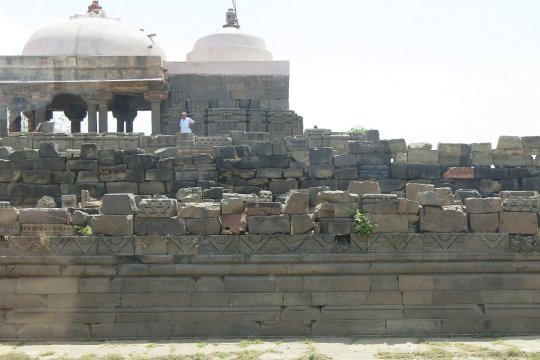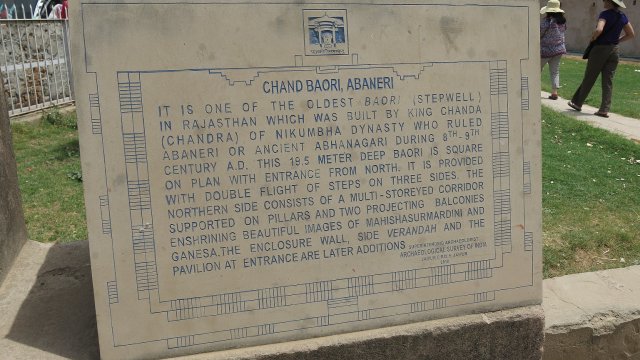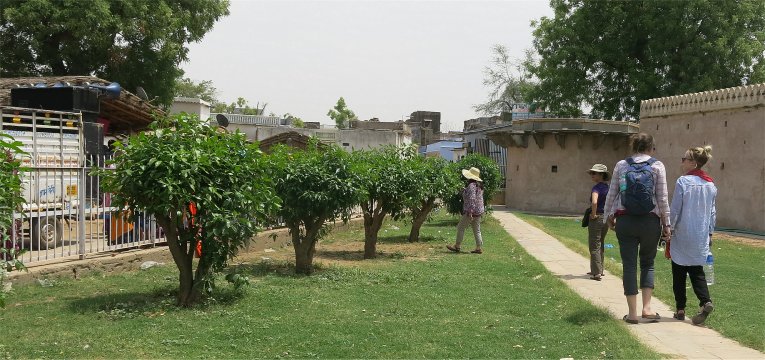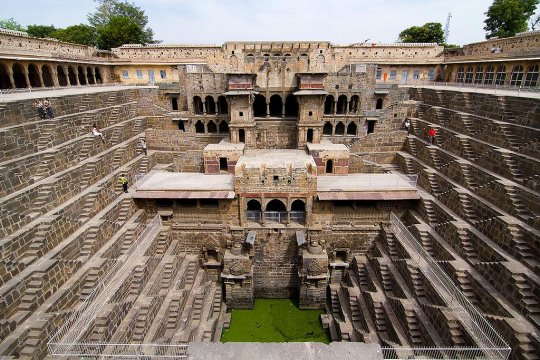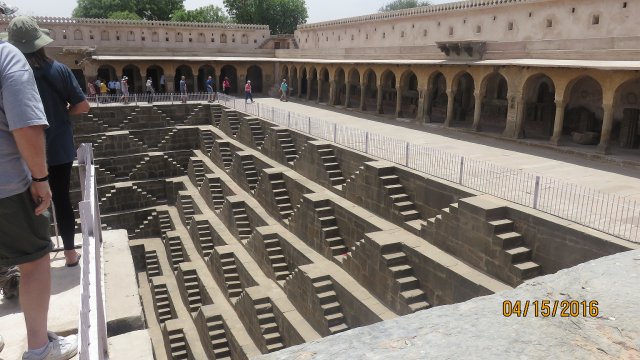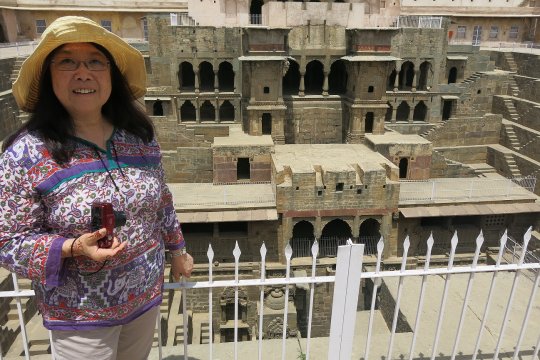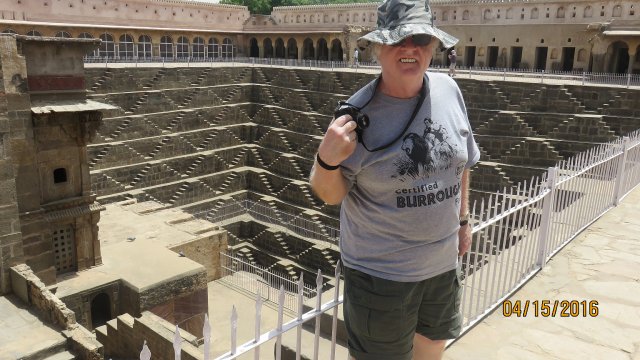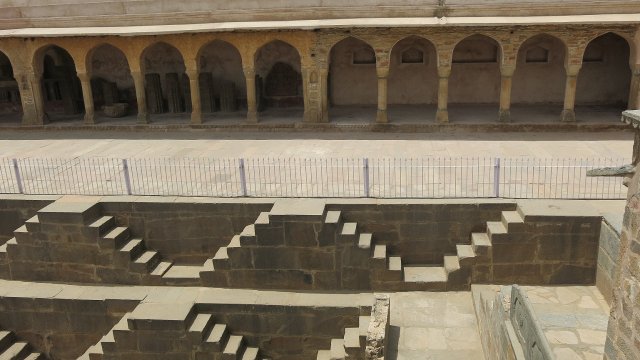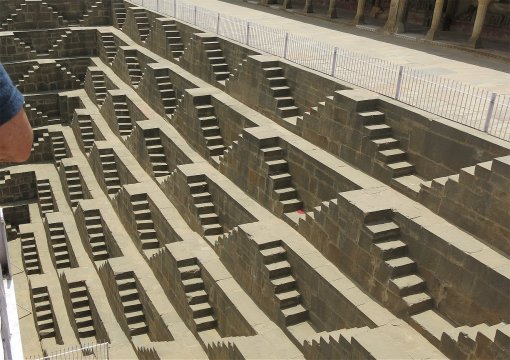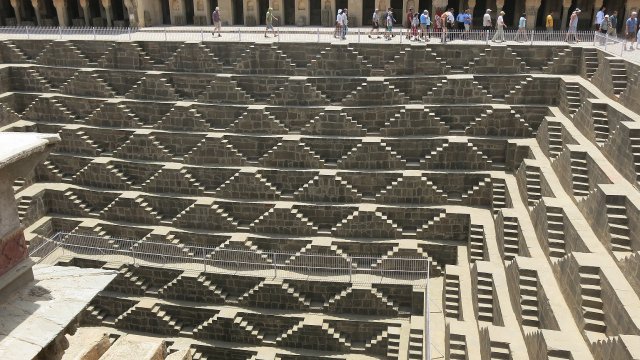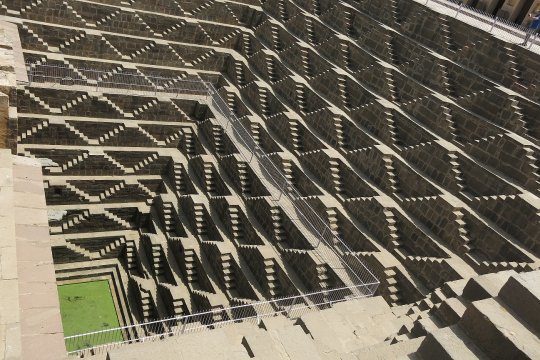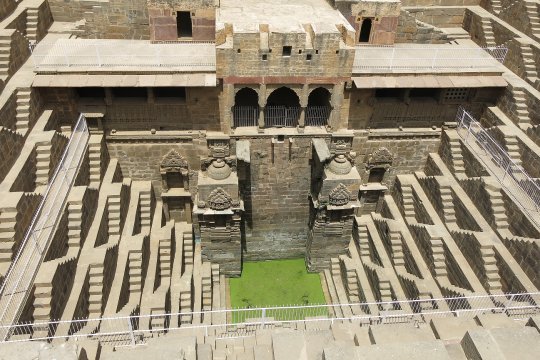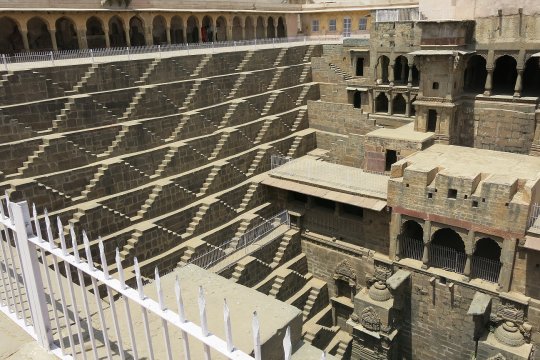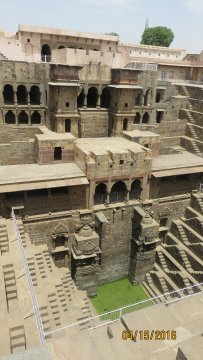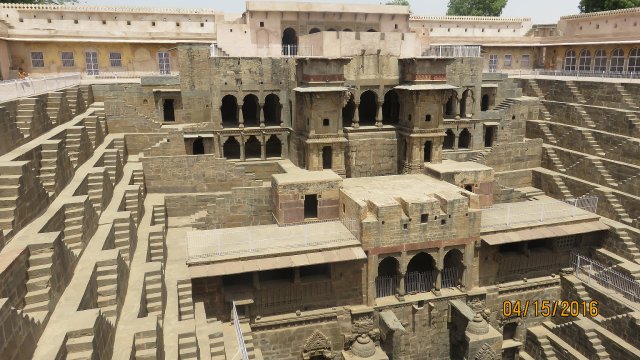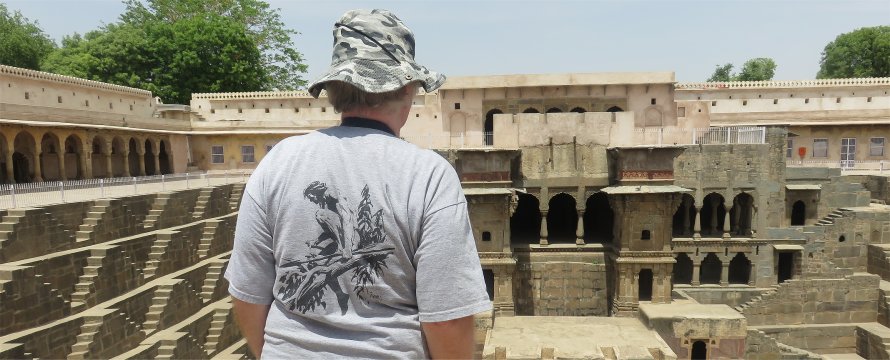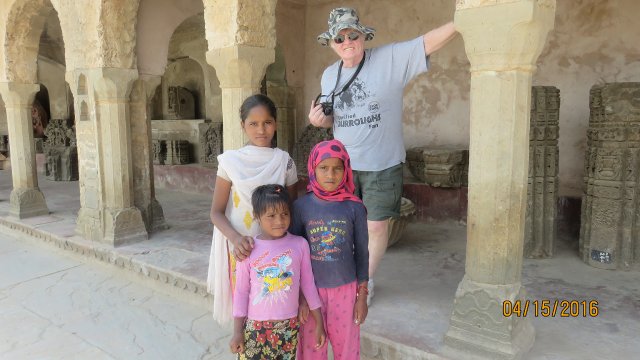Abhaneri Step Well is spectacular. It's a
place one has to see to believe how amazing the architecture is. While
exploring the site our CEO Parakrum gave us a lot of information. The well
site was discovered not that long ago, and only discovered because there
is a temple close by. Wherever there is a temple, there has to be a source
of water for the worshippers to cleanse before entering. All along the
sides of the top of the steps are huge blocks of carved stone that were
part of the old temple. The temple is no longer in service.
Water in the architecture of India could be found since
the earliest times and had played an important role in the culture. Stepwells
were first used as an art form by the Hindus and then popularized under
Muslim rule. Stepwells are wells or ponds in which the water may be reached
by descending a set of steps. They may be covered and protected and are
often of architectural significance. They also may be multi-storied having
a bullock which may turn the water wheel ("rehat") to raise the water in
the well to the first or second floor.
All forms of the stepwell are examples of the many
types of storage and irrigation tanks that were developed in India, mainly
to cope with seasonal fluctuations in water availability. A basic difference
between stepwells on the one hand, and tanks and wells on the other, was
to make it easier for people to reach the ground water, and to maintain
and manage the well.
The majority of surviving step wells originally also
served a leisure purpose, as well as providing water. This was because
the base of the well provided relief from daytime heat, and more of such
relief could be obtained if the well was covered. Step wells also served
as a place for social gatherings and religious ceremonies. Usually, women
were more associated with these wells because they were the ones who collected
the water. Also, it was they who prayed and offered gifts to the goddess
of the well for her blessings. This led to the building of some significant
ornamental and architectural features, often associated with dwellings
and in urban areas. It also ensured their survival as monuments.
Stepwells usually consist of two parts: a vertical
shaft from which water is drawn and the surrounding inclined subterranean
passageways, chambers and steps which provide access to the well. The galleries
and chambers surrounding these wells were often carved profusely with elaborate
detail and became cool, quiet retreats during the hot summers.
In 1864, the famous French world traveler Louis Rousselet
described "[a] vast sheet of water, covered with lotuses in flower,
amid which thousands of aquatic birds are sporting" at the shores of
which bathers washed, surrounded by jungle greenery. He was not describing
a lakeside scene or one of India's famous riverside ghats, but an ancient
well, as big as a large pond.

